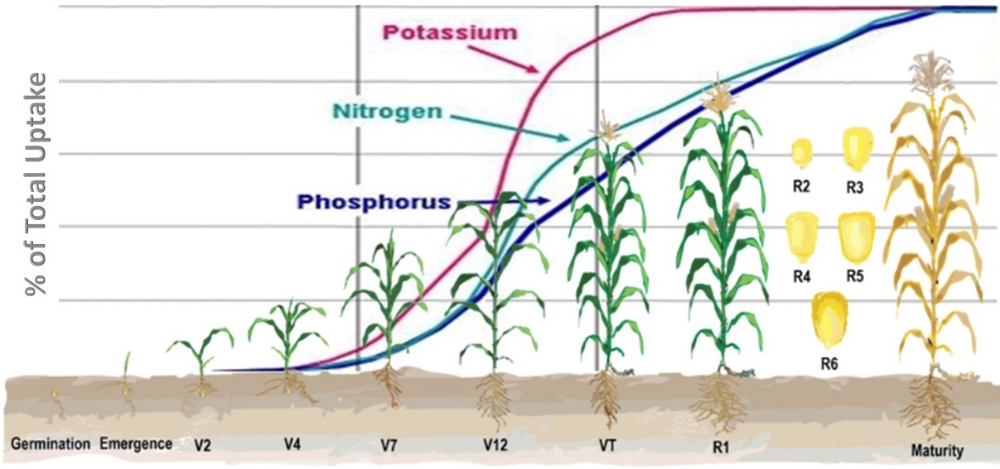What Is 1 1 1 Fertilizer

What is 1 1 1 fertilizer
During the growing season, apply 2 pumps to plant soil once monthly. Larger plants may call for more frequent application. During winter months, apply our water soluble fertilizer once every 6 weeks.
What is 111 fertilizer?
True Earth #111 Natural Fertilizer True Earth Fertilizer contains a variety of macro and micro nutrients, minerals, amino acids, vitamins, and oils balanced for the soil and plants to absorb. The application process is simple: #111 can be applied with most sprayers on any plant without fear of burning your plants.
What do the 3 numbers mean on fertilizer?
Understanding the Fertilizer Label These three numbers represent the primary nutrients (nitrogen(N) - phosphorus(P) - potassium(K)). This label, known as the fertilizer grade, is a national standard. A bag of 10-10-10 fertilizer contains 10 percent nitrogen, 10 percent phosphate and 10 percent potash.
What are the 3 types of fertilizers?
Three Main Classes of Fertilizers
- Nitrate fertilizers. Nitrogen-based fertilizers, the largest and most important group, take several steps to make.
- Phosphorus fertilizers. This group of fertilizers come from phosphate rock, a mined ore. ...
- Potassium fertilizers.
Can I just sprinkle fertilizer on top of soil?
All dry fertilizers should be worked or watered into the top 3 to 5 inches of soil with hoe or spade work after being applied to help the fertilizer leach down toward the plants' root zones. If your plants are already growing, cultivate gently so that you do not damage any roots.
What is the best time of day to apply fertilizer?
Late afternoon or early evening (when there's still light, of course) is the best time of day to apply lawn fertilizer. Applying it in the heat of a scorching afternoon can cause the sun's rays to burn your grass—and when your goal is “lush and green,” burned grass blades simply won't cut it.
What is poor man's fertilizer?
An old wives tale says that snow is the poor man's fertilizer. This is true because snow contains the nutrient nitrogen. The snow lies as a blanket on the ground and slowly percolates through the soft spring soil, gradually releasing its fertilizer and moisture into the soil.
What are the 4 types of fertilizers?
The European fertilizer industry transforms millions of tons of naturally occurring raw materials such as air, natural gas and mined ores into high quality plant nutrition products .
- Nitrogen fertilizers.
- Nitrogen fertilizers with inhibitors. ...
- Phosphorus fertilizers. ...
- Potassium fertilizers.
What is a good fertilizer ratio?
Studies have found that the ideal NPK fertilizer ratio of those nutrients for flowering plants is 3-1-2. (That's 3% Nitrogen, 1% phosphorus & 2% potassium.) So look for that ratio on the label of packaged fertilizers; anything close to a 3-1-2, a 6-2-4 or a 9-3-6 should be ideal.
What is 12 4 8 fertilizer good for?
A very useful formulation for landscaping. DYNAMAX™ fertilizers are special formulations of the DYNA GREEN™ line designed to stimulate luxuriant growth and dark green foliage by supplying the “extras” not found in the standard formulations.
What is 20 10 10 fertilizer good for?
Description. A good fertilizer for plants that require a lot of nitrogen; such as corn.
What is 10 15 10 fertilizer good for?
Schultz® All-Purpose Liquid Plant Food 10-15-10 is a concentrated product designed to feed all kinds of indoor plants, outdoor plants, flowers and vegetables. Perfect for transplanting, repotting and rooting. It is a micronutrient-rich fertilizer that will promote new growth. Must be mixed with water.
What is the most effective type of fertilizer?
A good all-purpose fertilizer would be a 10-10-10 NPK (nitrogen, phosphorus, and potassium). This type of fertilizer will work well for most plants and soil types.
What type of fertilizer is Miracle Gro?
'Miracle-Gro' is a 15-30-15 fertilizer, meaning that that the powder within contains 15 percent nitrogen, 30 percent phosphorous, and 15 percent potassium. Nitrogen, phosphorous, and potassium are the three main nutrients needed by plants, the ones plants gobble up in greatest quantity.
What is 8 8 8 fertilizer good for?
It regulates the nitrogen to carbon levels in the soil so it can hold in the nitrogen effectively. This miracle fertilizer is an excellent choice for rapid fill in and high stress areas.
Should soil be wet before fertilizing?
Most Scotts® fertilizers can be applied to either a wet or dry lawn. If you're applying a weed-and-feed product like Scotts® Turf Builder® Weed & Feed, though, you may need to apply to wet grass to help the particles adhere to the weeds for best results.
Should you water soil after fertilizing?
Why Water After Fertilizing? Watering after fertilizing washes the fertilizer off of the grass blades and into the soil, where it can get to work nourishing your lawn. It's also important because if fertilizer sits too long without being watered in, it can burn the grass.
Which fertilizer should not be mixed?
Ammonium phosphates and super phosphates should not be mixed with lime, slag, rock phosphate or CAN. Potassium chloride and sulfate of potash can be mixed with most fertilizers, but mixtures of these fertilizers with urea and calcium ammonium nitrate should not be stored.
What is the best month to fertilize your lawn?
Timing: Apply early spring lawn fertilizer once between February and April, when your grass is starting to green up and begin to actively grow (around the time your lawn first needs to be mowed).
When should you not fertilize?
The worst time to fertilize plants is at the end of their growing season. Trees, for example, begin to wake up and grow in early spring, and typically are fertilized once in February or March. Most shrubs make active growth in the spring and early summer, so we tend to fertilize them once around March or April.













Post a Comment for "What Is 1 1 1 Fertilizer "